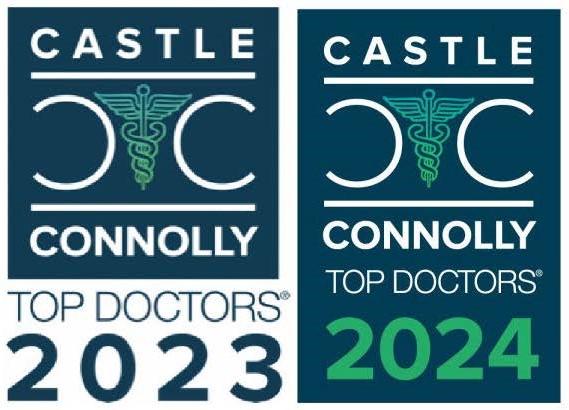
160,000.
That’s the number of active-duty U.S. military personnel stationed outside the country, facing immense challenges daily. Our veterans returning home often carry invisible scars from their service. The intense feelings of isolation, anxiety and sadness, struggle with mental health issues. All can remarkably impact their lives. These brave men and women may find it hard to reintegrate into civilian life. It can affect their personal relationships, job prospects and overall well-being.
Despite this, treatment options like Transcranial Magnetic Stimulation (TMS) can help. TMS can easily ease symptoms. It can help veterans regain their sense of peace and well-being. Understanding the prevalence and impact of mental health issues among veterans is the first step toward offering the support and care they deserve.
Are Veterans More Likely to Experience Mental Health Issues Than Civilians?
Yes, veterans can experience mental health issues more compared to civilians. This can be due to their unique experiences and challenges during and after military service.
Higher Prevalence of Mental Health Conditions
There is a study conducted in 2014 that revealed some startling statistics. Of the veterans, 25% meet the criteria for a mental health issue. Even more concerning, 11% of veterans are dealing with multiple mental health conditions simultaneously. Surprisingly it is significantly higher than the general population. Without a doubt, the rigorous demands of military life, exposure to traumatic events, and the stress of deployment all contribute to this higher prevalence.
PTSD Among Veterans
Post-Traumatic Stress Disorder (PTSD) is a mental health disorder originally identified in Vietnam War veterans and continues to be a common issue today. According to the U.S. Department of Veteran Affairs (VA), approximately 7% ( which is 7 in every 100 veterans) of veterans will experience PTSD at some point in their lives. This is compared to about 6% of civilians.
The percentage difference may seem small. Even so the impact is profound. The sounds of gunfire, the loss of comrades, and the constant threat to their lives leave lasting scars on their mental health.
Transition to Civilian Life
Transitioning to civilian life is a significant and often daunting challenge for many veterans. A recent study of 1,000 former U.S. service members found that finding employment is the most common difficulty, with about a third (33%) identifying it as their biggest hurdle.
Additionally, nearly an equal number (28% each) reported struggling to stay connected with their military social circles and finding a fulfilling career path. These challenges pinpoint the profound sense of displacement and uncertainty that many veterans feel as they reintegrate into civilian life.
Need for Mental Health Care Programs
The demand for mental health care programs among veterans is substantial. Approximately 41% of veterans require mental health care programs annually. This high demand underscores the complexity of mental health and suicide issues among veterans.
Mental health care programs are essential in providing the necessary support and treatment for veterans facing these challenges. These programs offer a lifeline, helping veterans navigate their mental health issues and improving their overall well-being.
Suicide Risk Among Veterans
One of the most pressing concerns is the risk of suicide among veterans. The risk is particularly high during the initial months following military separation. United States Department of Veterans Affairs (VA) reports indicate that veterans are most vulnerable to suicide in the first three months after leaving the military.
Unfortunately, this elevated risk can persist for years. In 2020 alone, there were 6,146 veteran suicides. That’s like 16.8 per day. This staggering statistic underscores the urgent need for effective mental health support and intervention strategies for veterans. The reality is sobering. Veterans are losing their lives to suicide at an alarming rate.
What Are the Most Common Mental Health Conditions Affecting Veterans?
Truly, veterans often face unique mental health issues that set them apart from the civilian population. Understanding these conditions is important to provide veterans the best support and care. Among the most common mental health conditions affecting veterans are:
Post-Traumatic Stress Disorder (PTSD)
Post-Traumatic Stress Disorder (PTSD) is perhaps the most well-known mental health issue among veterans. In 2013, the American Psychiatric Association updated the DSM-5. They reclassified PTSD from “anxiety disorders” to a new category called “trauma and stressor-related disorders.” This change underscores the distinct nature of PTSD, emphasizing its roots in traumatic experiences.
A significant study found that 13.5% of 60,000 Iraq and Afghanistan veterans, both deployed and non-deployed, screened positive for PTSD. To add to that, other research indicates even higher rates with some studies suggesting that 20% to 30% of these veterans may experience PTSD. The condition is often linked to the harrowing events and stressors encountered during military service.
Additionally, female veterans are particularly vulnerable to military sexual trauma (MST) which includes sexual assault or repeated threatening sexual harassment experienced during service. A study revealed that about 22% of screened female veterans reported MST, a factor that significantly contributes to PTSD among this group.
The prevalence of PTSD among veterans is staggering. With approximately 500,000 U.S. troops diagnosed with the condition over the past 13 years. Added tot that, depression often coexists with PTSD. With major depressive disorder (MDD) being nearly three to five times more likely in those with PTSD. A meta-analysis of 57 studies showed a 52% comorbidity rate of MDD and PTSD across both military and civilian populations, highlighting the close link between these two conditions.
Depression
Depression is another prevalent mental health issue among veterans. Data from National Survey on Drug Use and Health showed no overall difference in past-year major depressive episodes between veterans and non-veterans (4.7% vs. 4.6%). Yet, age-specific differences were notable. Veterans aged 18 to 25 had a 9.6% rate of major depressive episodes, and those aged 26 to 54 had a 7.7% rate. Both higher than their non-veteran counterparts (6.9% and 6.1%, respectively).
Among veterans served by the VA, the prevalence of MDD is 6.5%. Several risk factors contribute to depression among veterans, including genetic, biological, environmental, and psychological elements that often interact. In the U.S. military, being female, young (17-25 years old), unmarried, and having less than a college education increase the likelihood of experiencing depression. Other significant risk factors include military sexual trauma, childhood physical abuse, adverse childhood experiences, deployment and combat exposure.
Substance Use Disorders
Substance use disorders are also common among veterans. Heavy episodic drinking and cigarette smoking being the most prevalent issues. Studies have found that veterans are more likely to use alcohol (56.6% vs. 50.8% in a month) and report heavy alcohol use (7.5% vs. 6.5% in a month) compared to non-veterans. Also high combat exposure further increases the risk of problematic alcohol use. Those with high exposure are more likely to engage in heavy (26.8%) and binge (54.8%) drinking compared to other military personnel (17% and 45%, respectively).
Alcohol and drug use disorders are more prevalent among male veterans (10.5% for alcohol use disorders, 4.8% for drug use disorders) than female veterans (4.8% and 2.4%, respectively). These disorders are also more common among non-married and younger veterans (< 25 years old).
Beyond that, veterans are also more likely to be smokers, with a higher age-adjusted prevalence of smoking compared to civilians (27% vs. 21%). Among veterans with coronary heart disease, smoking is more prevalent than in civilians. It is important to note cigarette smoking is responsible for 23% of cancer-related deaths among former smokers and 50% among current smokers.
Disclaimer: The information provided here is for general informational purposes only and is not intended as medical advice. Always consult with a healthcare professional for medical advice, diagnosis, or treatment.
What Factors Contribute to Mental Health Issues in Veterans?
Veterans face a unique set of challenges that contribute to the development of mental health issues. Some are:
Combat Exposure
One of the most significant contributors is combat exposure. Veterans who have been in active combat zones could experience intense stress and trauma. They witness violence, injury, and death which can lead to conditions like PTSD and anxiety disorders. The constant threat to their lives and the lives of their comrades creates a high-stress environment that leaves lasting psychological scars.
Military Sexual Trauma (MST)
Military sexual trauma (MST) is another critical factor. Both men and women in the military may experience sexual assault or repeated threatening sexual harassment. Likewise, the emotional and psychological impact of MST is profound often leading to PTSD, depression, and other mental health issues.
Transition to Civilian Life
As stated earlier, transitioning from military to civilian life poses significant challenges. Veterans often struggle with reintegration, facing difficulties in finding employment, adjusting to civilian routines, and reconnecting with family and friends. This period of adjustment can lead to feelings of isolation, depression and anxiety. The loss of the structured and supportive military environment can be jarring, exacerbating mental health issues.
Substance Use
Substance use is a common coping mechanism among veterans dealing with mental health issues. The stress and trauma of military service can lead to increased alcohol and drug use. Substance use disorders often coexist with other mental health conditions. Creating a cycle that is difficult to break. Veterans with high combat exposure or those who have experienced MST are particularly vulnerable to developing substance use disorders.
Lack of Access to Care
Finally, a lack of access to appropriate mental health care is a significant factor. Many veterans do not receive the mental health services they need due to various barriers. This includes stigma, lack of awareness, and inadequate outreach by healthcare providers.
Can TMS Therapy Help Veterans with Mental Health Issues?
TMS is a non-invasive therapy that uses magnetic fields to stimulate nerve cells in the brain. This stimulation helps to improve symptoms of depression, PTSD and other mental health conditions. Unlike traditional treatments, TMS does not require medication and has minimal side effects, making it an attractive option for many veterans who have not found relief through other means.
Benefits of TMS Therapy
The benefits of TMS therapy are substantial. For veterans with depression TMS can lead to significant improvement in mood, energy levels, and overall quality of life. It is particularly effective for those who have not responded well to antidepressant medications. For veterans suffering from PTSD, TMS can reduce symptoms such as flashbacks, anxiety and insomnia. The therapy targets specific brain areas involved in mood regulation and stress response. Which can help restore normal function and alleviate symptoms.
How TMS Institute of Arizona Can Help
We, at TMS Institute of Arizona are on a mission to bring life-changing relief to those struggling with mental health issues. Our center specializes in the most effective TMS therapies providing veterans with the care they need to improve their health and well-being. We believe that everyone deserves access to the transformative benefits of TMS.
Our team of dedicated professionals works closely with each patient to create a personalized treatment plan. And we offer a supportive and compassionate environment where veterans can receive the care they deserve. Choosing the TMS Institute of Arizona will help veterans reclaim their mental health and enhance their quality of life.
Also, we are in-network with TRICARE which provides health insurance for active military, retirees, and their families. Meaning veterans can access our services with the support of their TRICARE benefits, ensuring they receive the care they need without added financial stress.
Don’t hesitate to reach out. Contact us to learn more. We will support you on your journey to better mental health.
References:
Brown, D. W. (2009). Smoking Prevalence among US Veterans. Journal of General Internal Medicine, 25(2), 147–149. https://doi.org/10.1007/s11606-009-1160-0
Bray. (2024). Trends in binge and heavy drinking, alcohol-related problems, and combat exposure in the U.S. military. Substance Use & Misuse, 48(10). https://doi.org/10.3109/10826084.2013.796990
National Academies of Sciences, Engineering, and Medicine; Health and Medicine Division; Board on Health Care Services; Committee to Evaluate the Department of Veterans Affairs Mental Health Services. (2018, January 31). Department of Veterans Affairs Mental Health Services: Need, Usage, and Access and Barriers to Care. Nih.gov; National Academies Press (US). https://www.ncbi.nlm.nih.gov/books/NBK499497/
Gadermann, A. M., Engel, C. C., Naifeh, J. A., Nock, M. K., Petukhova, M., Santiago, P. N., Wu, B., Zaslavsky, A. M., & Kessler, R. C. (2012). Prevalence of DSM-IV Major Depression Among U.S. Military Personnel: Meta-Analysis and Simulation. Military Medicine, 177(8S), 47–59. https://doi.org/10.7205/milmed-d-12-00103
Issue Help With Readjustment and Social Support Needed for Veterans Transitioning From Military Service From Science to Practice Using Research to Promote Safety and Prevent Suicide. (n.d.). https://www.mentalhealth.va.gov/suicide_prevention/docs/Literature_Review_Military_Separation_508_FINAL_05-24-2019.pdf
Kimerling, R., Gima, K., Smith, M. W., Street, A., & Frayne, S. (2007). The Veterans Health Administration and Military Sexual Trauma. American Journal of Public Health, 97(12), 2160–2166. https://doi.org/10.2105/ajph.2006.092999
Kessler, R. C., Heeringa, S. G., Stein, M. B., Colpe, L. J., Fullerton, C. S., Hwang, I., Naifeh, J. A., Nock, M. K., Petukhova, M., Sampson, N. A., Schoenbaum, M., Zaslavsky, A. M., & Ursano, R. J. (2014). Thirty-Day Prevalence ofDSM-IVMental Disorders Among Nondeployed Soldiers in the US Army. JAMA Psychiatry, 71(5), 504–504. https://doi.org/10.1001/jamapsychiatry.2014.28
McLaughlin. (2022). Smoking and cancer mortality among U.S. veterans: a 26-year follow-up. International Journal of Cancer, 60(2). https://pubmed.ncbi.nlm.nih.gov/7829214/
National Academies of Sciences, E., Division, H. and M., Services, B. on H. C., & Services, C. to E. the D. of V. A. M. H. (2018). Clinical Management of Mental Health Conditions at the Veterans Health Adminstration. In www.ncbi.nlm.nih.gov. National Academies Press (US). https://www.ncbi.nlm.nih.gov/books/NBK499504/
Pemberton, M., Forman-Hoffman, V., Lipari, R., Ashley, O., Heller, D., & Williams, M. (2016). Prevalence of Past Year Substance Use and Mental Illness by Veteran Status in a Nationally Representative Sample CBHSQ DATA REVIEW. https://www.samhsa.gov/data/sites/default/files/NSDUH-DR-VeteranTrends-2016/NSDUH-DR-VeteranTrends-2016.pdf
Pai, A., Suris, A., & North, C. (2017). Posttraumatic Stress Disorder in the DSM-5: Controversy, Change, and Conceptual Considerations. Behavioral Sciences, 7(4), 7–7. https://doi.org/10.3390/bs7010007
Rytwinski, N. K., Scur, M. D., Feeny, N. C., & Youngstrom, E. A. (2013). The Co-Occurrence of Major Depressive Disorder Among Individuals With Posttraumatic Stress Disorder: A Meta-Analysis. Journal of Traumatic Stress, 26(3), 299–309. https://doi.org/10.1002/jts.21814
Reisman, M. (2016). PTSD Treatment for Veterans: What’s Working, What’s New, and What’s Next. P & T : A Peer-Reviewed Journal for Formulary Management, 41(10), 623–634. https://www.ncbi.nlm.nih.gov/pmc/articles/PMC5047000/
Seal, K. H., Cohen, G., Waldrop, A., Cohen, B. E., Maguen, S., & Ren, L. (2011). Substance use disorders in Iraq and Afghanistan veterans in VA healthcare, 2001–2010: Implications for screening, diagnosis and treatment. Drug and Alcohol Dependence, 116(1-3), 93–101. https://doi.org/10.1016/j.drugalcdep.2010.11.027
Thompson M. (2015). Unlocking the secrets of PTSD. Time, 185(12). https://pubmed.ncbi.nlm.nih.gov/25980055/
Teeters, J., Lancaster, C., Brown, D., & Back, S. (2017). Substance Use Disorders in Military veterans: Prevalence and Treatment Challenges. Substance Abuse and Rehabilitation, Volume 8(1), 69–77. https://doi.org/10.2147/sar.s116720
U.S. Department of Veterans Affairs. (2022). National veteran suicide prevention annual report. https://www.mentalhealth.va.gov/docs/data-sheets/2022/2022-National-Veteran-Suicide-Prevention-Annual-Report-FINAL-508.pdf
Veterans Day News: New Survey Finds Top Challenges Facing Veterans in the Transition to Civilian Life. (2023). Vfw.org. https://www.vfw.org/media-and-events/latest-releases/archives/2023/11/veterans-day-news-new-survey-finds-top-challenges-facing-veterans-in-the-transition-to-civilian-life
VA.gov | Veterans Affairs. (2021). Va.gov. https://www.ptsd.va.gov/understand/common/common_veterans.asp
Wikipedia Contributors. (2024, July 10). Post-traumatic stress disorder. Wikipedia; Wikimedia Foundation. https://en.wikipedia.org/wiki/Post-traumatic_stress_disorder
Wikipedia Contributors. (2024, May 25). United States military deployments. Wikipedia; Wikimedia Foundation. https://en.wikipedia.org/wiki/United_States_military_deployments













